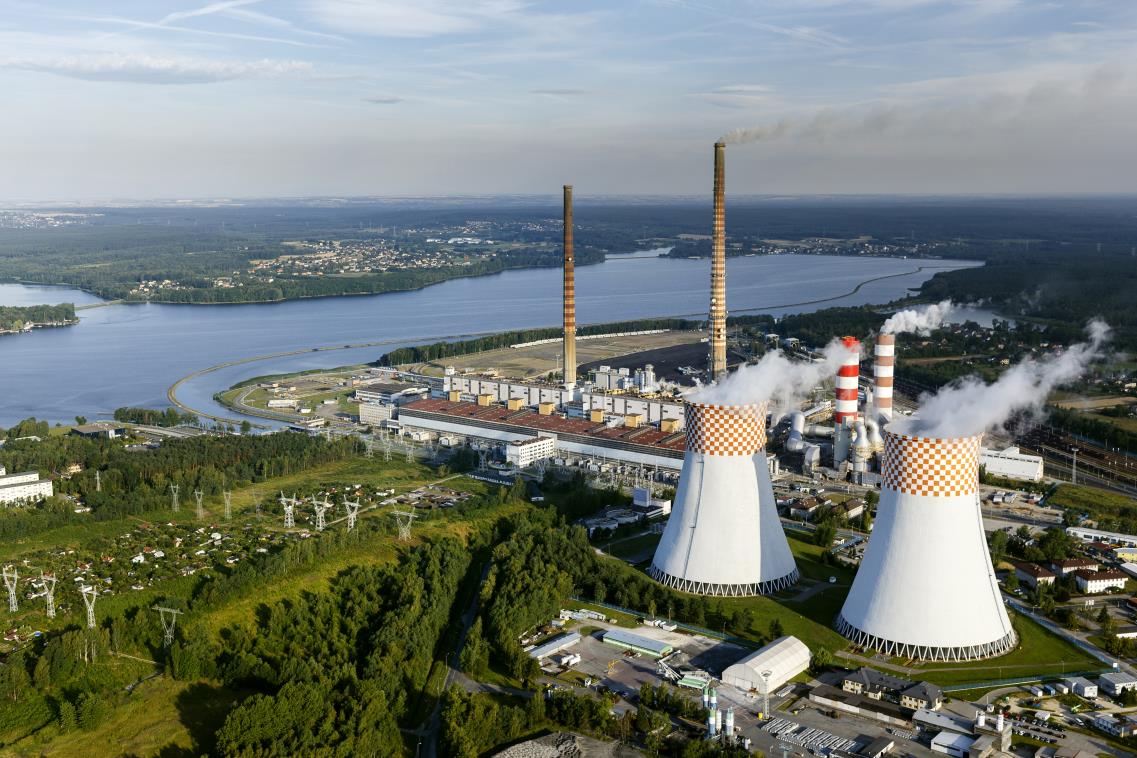The region of Upper Silesia, located in southern Poland, is part of the Silesian Voivodeship and is the most industrialised region in Poland, with total annual CO2 emissions exceeding 33 Mt. The Voivodeship’s industry is diversified with almost all mining and processing industries represented. In particular, there is a strong mining industry comprising 16 coal mines and a strong energy sector with about 7GW of capacity. The region is highly urbanised with a population of 4.5 million, 11.8% of Poland’s population, 76.6% of which live in towns and cities. It accounts for 12.3% of Poland’s GDP. Despite high urbanisation, the region is characterised by rich biodiversity and a high level of forest cover of 32.1%.
Concentrated within Upper Silesia are large industrial emitters such as coal-fired power plants and heating plants, steelworks and a coking plant. Electricity and heat are produced mainly from hard coal and natural gas, though the share of renewable energy sources is growing rapidly in Poland. Within the region, there are over 100 carbon dioxide emitters covered by the EU’s Emissions Trading System. However, over 90% of the emissions come from approximately 15 large hard coal power plants and from the coke and metallurgical complex. Emissions per capita are 7.2 tonnes a year compared to the EU average of 6.4 tonnes a year.
Low storage potential
“Upper Silesia is a region that gathers a lot of CO2 emitters but at the same time is characterised by a low storage potential,” says Tomasz Urych of Główny Instytut Górnictwa (GIG), the Central Mining Institute, PilotSTRATEGY’s partner in Poland.
The possibility of storing CO2 in geological formations in Upper Silesia has been investigated mainly within STRATEGY CCUS, PilotSTRATEGY’s predecessor project, and within a Polish national project “Assessment of formations and structures for safe CO2 geological storage”. These identified four possible storage sites with total capacity of 111.5 Mt. The best conditions are in deep saline aquifers in the Miocene deposits of the Debowiec Beds. Storage capacity has also been identified in deep saline aquifers in marine deposits of the Jurassic Czestochowa District, estimated at about 50 Mt.
“In terms of storage capacity of the sites, it is only sufficient for the needs of a single medium-sized emitter in Upper Silesia,” says Mr Urych. “As a result, preliminary studies are being carried out on different options to transport CO2 to depleted gas fields and aquifers located elsewhere in Poland, including by pipeline.”
Public engagement
As part of PilotSTRATEGY, interviews with stakeholders were conducted to gather views on development of CCUS in Upper Silesia. Thirteen representatives of different sectors – politics and policy, research and education, industry, NGOs and support organisations – were interviewed. Views of CCUS were very varied.
“Opinions covered the full range, from strongly negative about CCS in general to positive for a variety of reasons. The main argument in favour was the potential economic benefits including the possibility of additional jobs; creating cooperation between stakeholders; and making the region attractive and competitive for future investors,” says Mr Urych.
PilotSTRATEGY has also examined public acceptance via a questionnaire filled in online. Polish respondents showed medium levels of familiarity with CCS and overall were positive with nearly 60% seeing it as a good option to tackle climate change.
Geocharacterisation has also been conducted as part of PilotSTRATEGY. Geological data from two possible CO2 storage sites identified in deep saline aquifers have been acquired, reprocessed and reinterpreted to advance understanding of the prospects for CO2 storage. Currently, works are being carried out to build 3D geological models for two potential storage reservoirs, says Mr Urych.
In parallel, legislation is working its way through the Polish parliament to permit onshore storage of CO2.
“Ongoing work on legislative changes concerning CO2 storage in Poland, on definitions, concessions and environmental decisions, as well as changes in energy law, give hope from the possibility of developing CCUS technology in Poland,” says Mr Urych. “It seems that clean coal technologies, including CCUS, can support evolutionary transformation while meeting European climate goals.”
Image: Rybnik Power Station, courtesy of PGE Polska Grupa Energetyczna SA.



